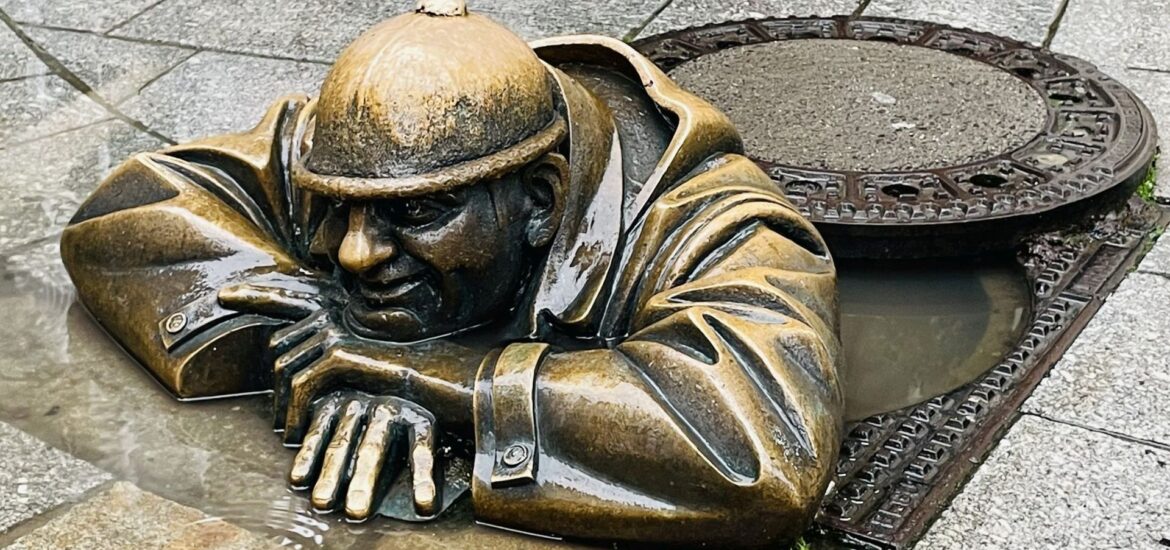Last month we made a round trip through Slovakia, a rather unknown destination for travelers. Although its capital city, Bratislava, has become increasingly well-known to the general public since Slovakia became an independent state, much of the rest of the country remains a hidden secret. This is a shame, because here you will discover charming villages and towns, and an authentic folk culture that has disappeared from much of Europe. Moreover, the country is dotted with medieval castles and dramatic fortresses. Did you know that no other country in Europe has more castles than Slovakia?
But in this blog post I would like to introduce you to some of the most beautiful places in Slovakia we visited during our trip.
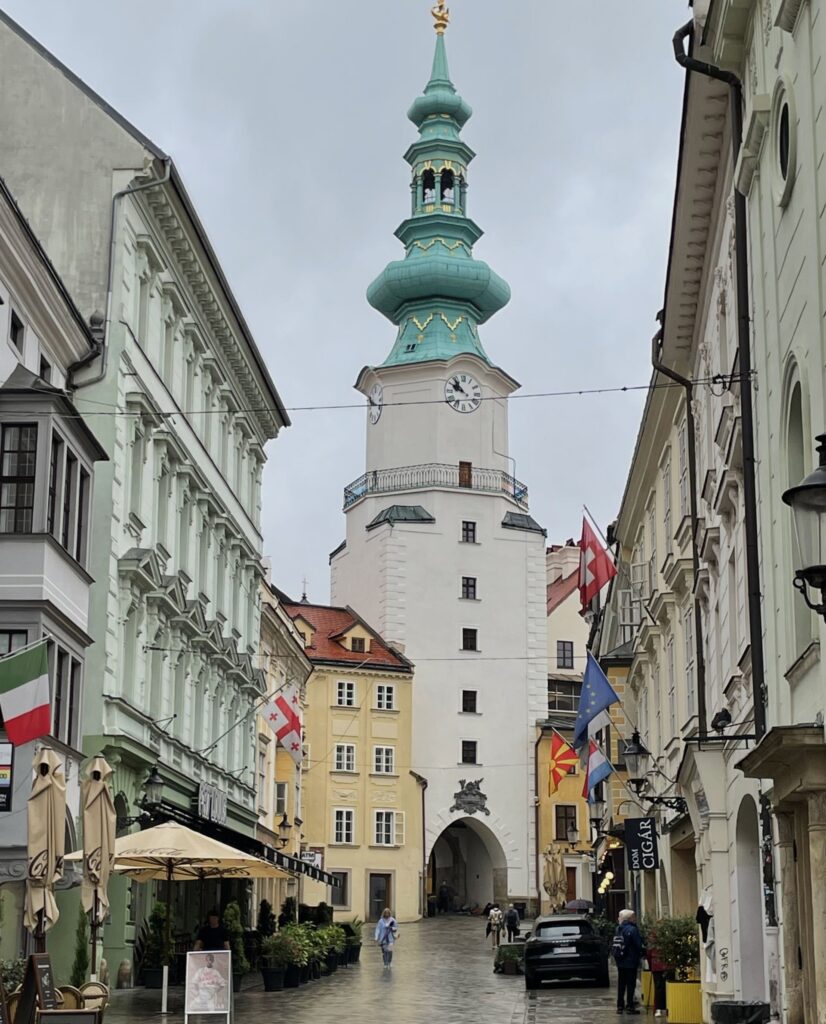
Bratislava
Bratislava, the capital of Slovakia, is a charming historical city to explore. It is a calm, laid-back place, dominated by the castle that stands on a hilltop overlooking the city.
The old town is very picturesque and doesn’t seem as busy as other capital cities. Although the weather was rainy, we made a nice walk through the narrow streets and squares. The main attraction, Michael’s Gate, is one of the oldest buildings in the city (14th century) and the only remaining city gate from the medieval fortifications. The 51-metre-high tower above the gate is a well-known landmark of Bratislava.
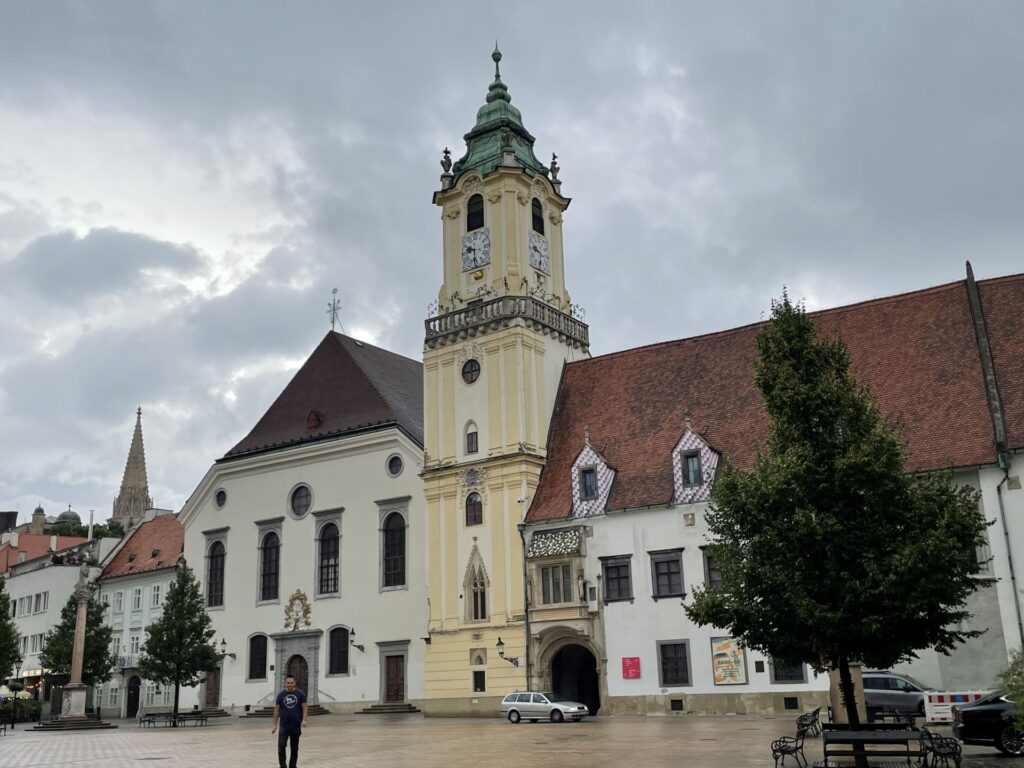
The impressive main square, Hlavne namestie, used to be a place of execution. The square is surrounded by beautiful buildings, among which the Old Town Hall, dating back to the 14th century.
There are many other attractions in Bratislava, but one of the most interesting is, no doubt, Čumil, also known as the Man at Work – a bronze statue of a man crawling out of a sewer hole (photo 1). It was not easy to make a photo of this statue, as many Asian tourists were waiting in line to be photographed together with this funny little man!
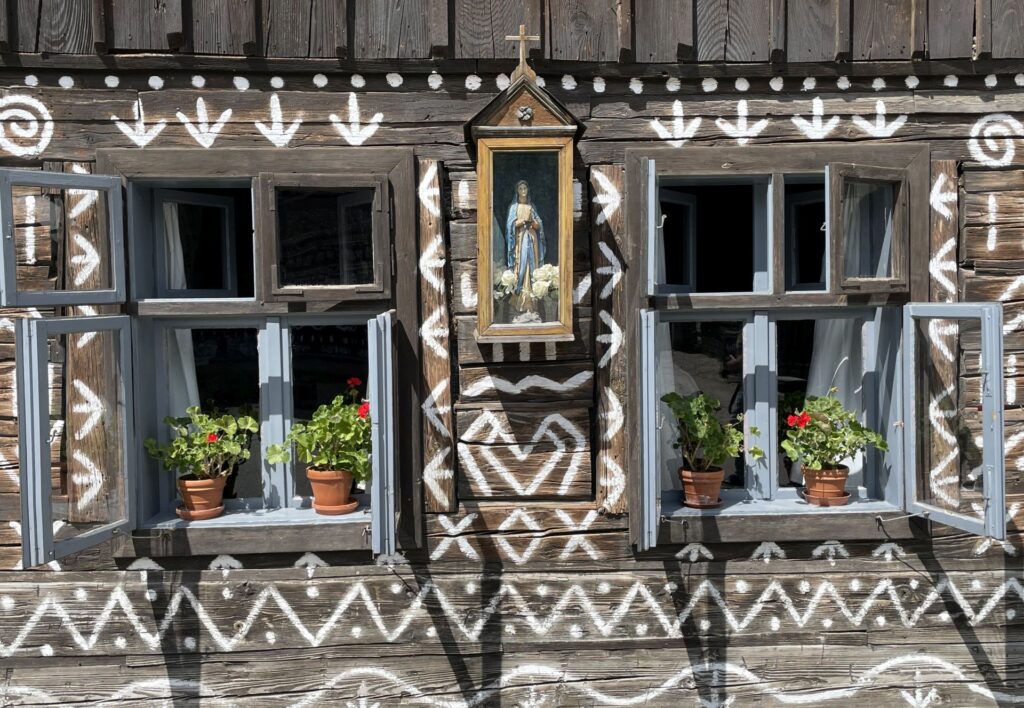
Čičmany
One of the most interesting places we visited in Slovakia is the picturesque village of Čičmany, well-known for its beautiful wooden houses with their typical white decorations in geometric patterns. It is an ideal place to see what traditional houses in this region look like. The tradition started around 200 years ago, when women in the village painted the patterns with white lime to protect the damaged wood. These days, it is done for decorative reasons and to keep the tradition alive.
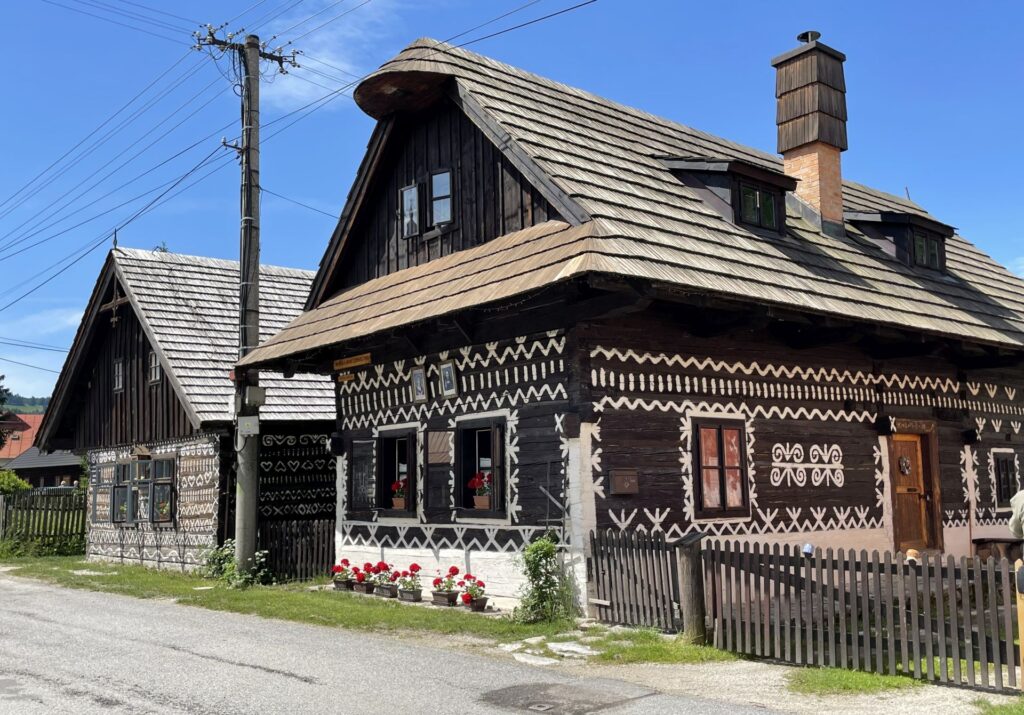
In 1977, Čičmany was recognized as a national cultural monument of Slovakia and it was included in the UNESCO World Heritage List in 2008. This village is home to 136 of such beautiful log houses. There were only a few tourists around and we could quietly walk among the houses and look at each building. All houses were similar in appearance, but the patterns were different. There were pictures of birds, animals and various geometric figures. It was a pity that we could not get more information about the meaning of the ornamentation.
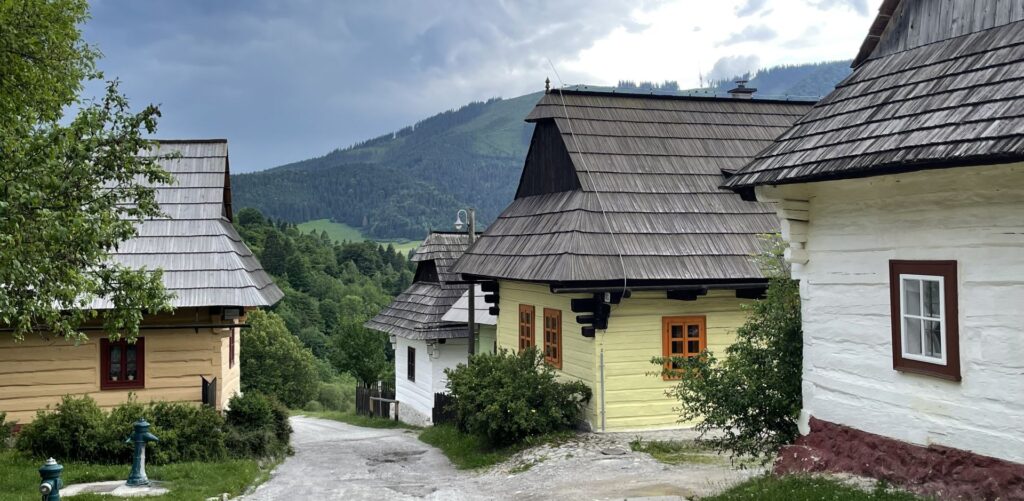
Vlkolinec
Vlkolínec is an incredibly preserved 18th-century UNESCO World Heritage Site, nestled in the mountains, far away from the crowds. This charming rural village has managed to preserve its authentic character better than any other village in Slovakia.
Vlkolinec has an interesting history. The word Vlkolinec has got its name from the word “wolf”. The town was first documented in 1376. In the 16th century, the town served as a logging community for the nearby town of Ružomberok.
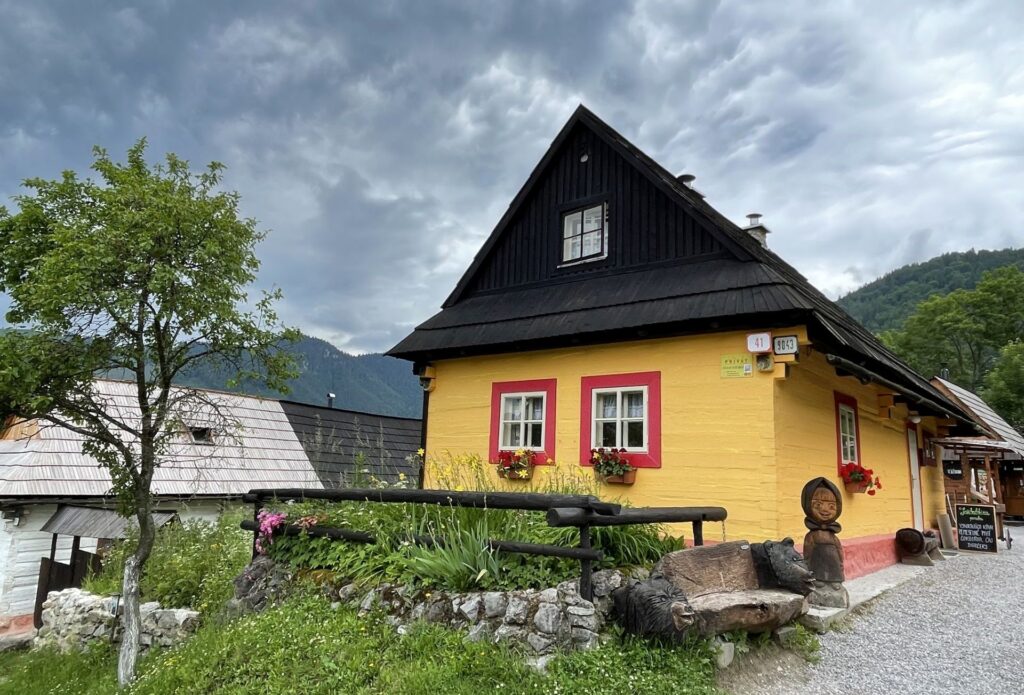
No wonder that we enjoyed roaming through the village, as the colorful houses are very photogenic. We walked along the main street uphill and all around us we could see a traditional farm landscape with fields laid out in strips. We admired the 55 historic houses, built from carefully stacked wooden poles and at the center we found a wooden bell tower dating back to 1770. Altogether, Vlkolinec is certainly worth a visit!
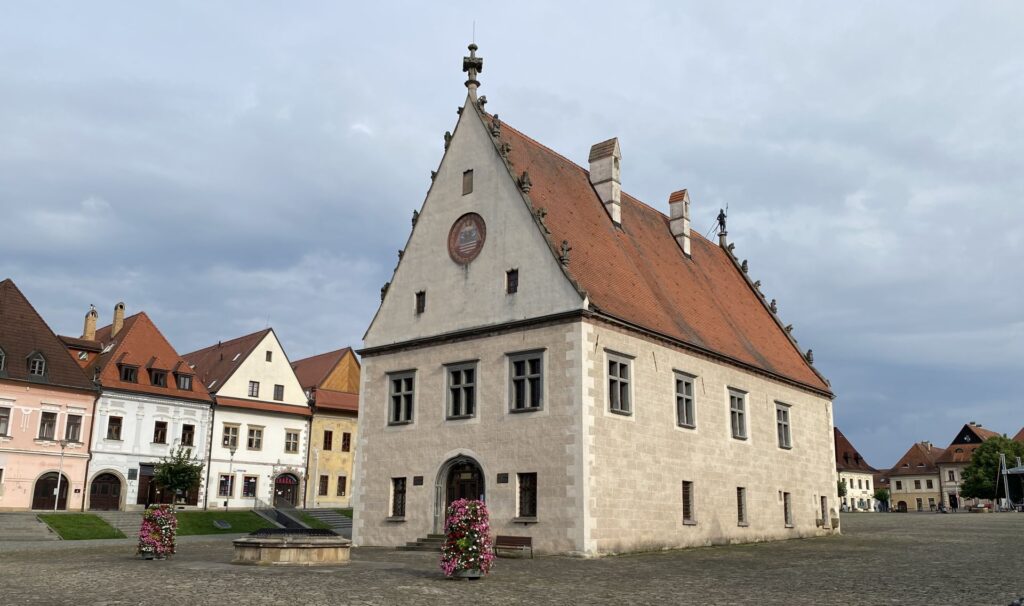
Bardejov
Bardejov is one of the oldest towns in Slovakia and it is also included in the UNESCO World Heritage List. It is sometimes called the “most Gothic town in Slovakia”, but I would rather say that the town looks like a fairy tale!
The moment we entered the market square of Bardejov, we could not believe our eyes. Rows of colorful houses with typical gables, cobblestone ground, cafes hidden in the shadows and the beautiful 16th-century town hall in the middle looked just too perfect to be true. Moreover, obviously tourists have not discovered the place yet, as there were hardly any people around!
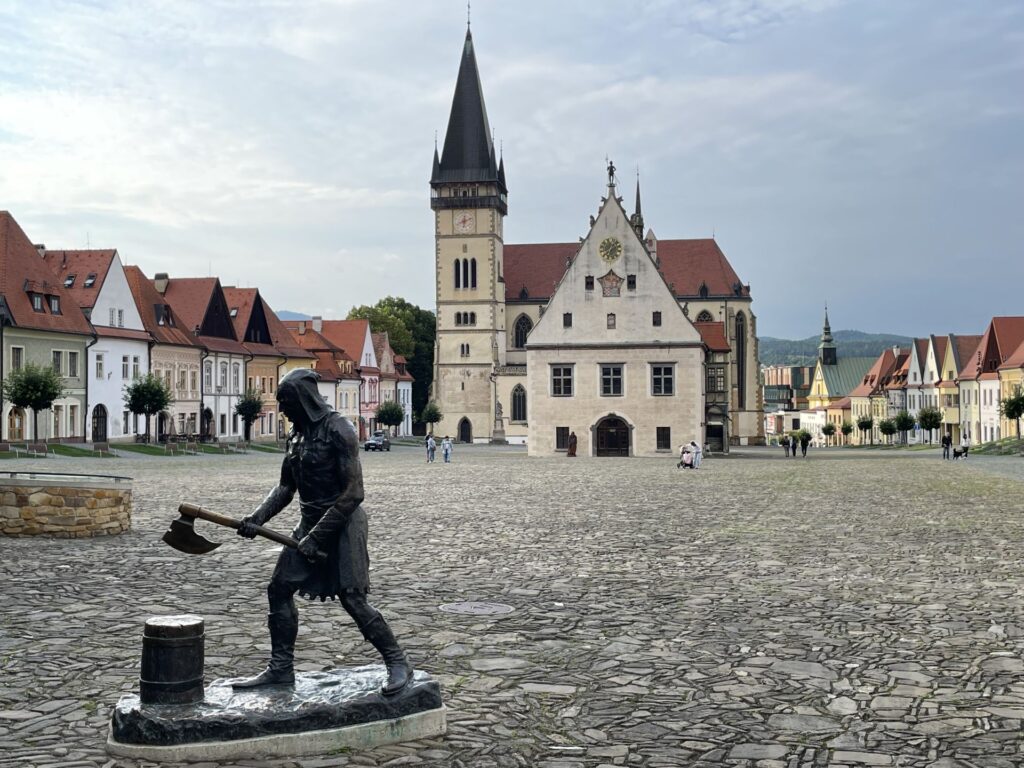
Although centuries passed by, we could still imagine how the city used to look like back in the golden times. The picturesque old town is surrounded by the remarkably well preserved city walls. No wonder, Bardejov used to be one of the most important places in Upper Hungary, with trading routes from the Balkans to the North crossing through the town. That also explains why there is such a spectacular Gothic basilica, the St. Giles Church, which dominates the market square. Its current look comes from the 15th century and the interior with its 11 altars takes your breath away.
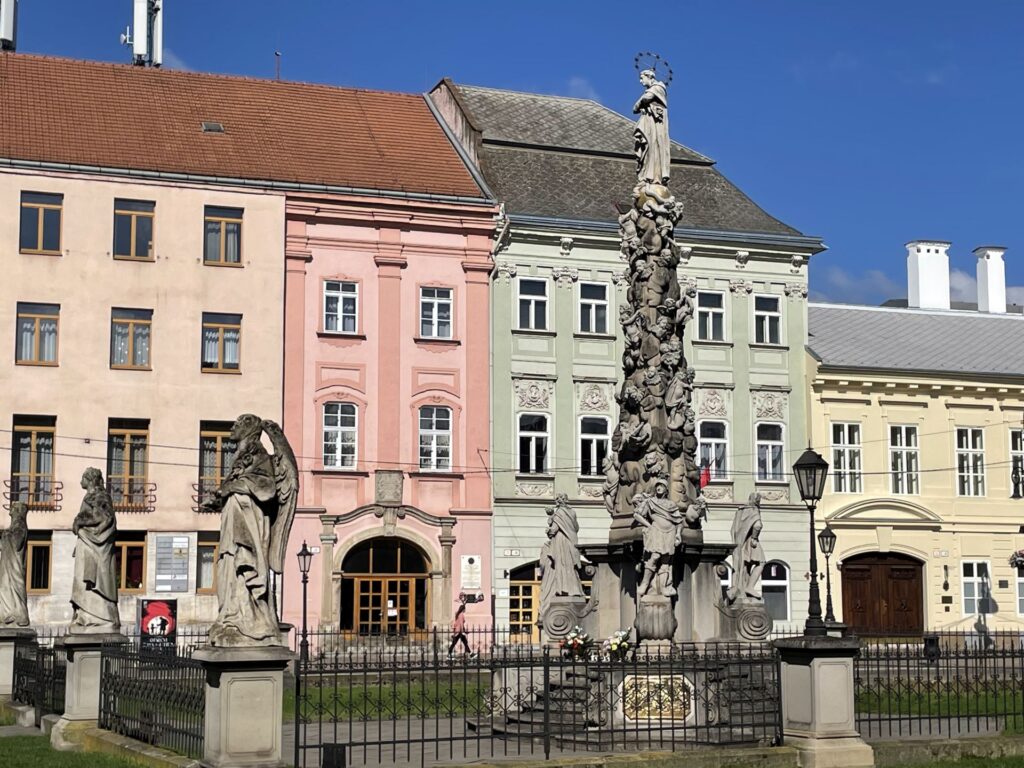
Košice
With a population of over 250,000, Košice is the second largest city in Slovakia. The old town is fairly small and walkable, but yet there is plenty to see. We strolled down Hlavna Street (the main pedestrian street) and passed dozens of colorful houses, mansions and stylish shops. Remarkably, there were hardly any tourists.
What is there to see in Košice? I will mention only the most important attractions: the Plague Pillar, a 14 m-tall Baroque plague column, can be seen in the middle of Hlavna Street. Close by is St. Elisabeth Cathedral that was completed in the 16th century. It is the biggest cathedral in Slovakia and the easternmost Gothic church in Europe.
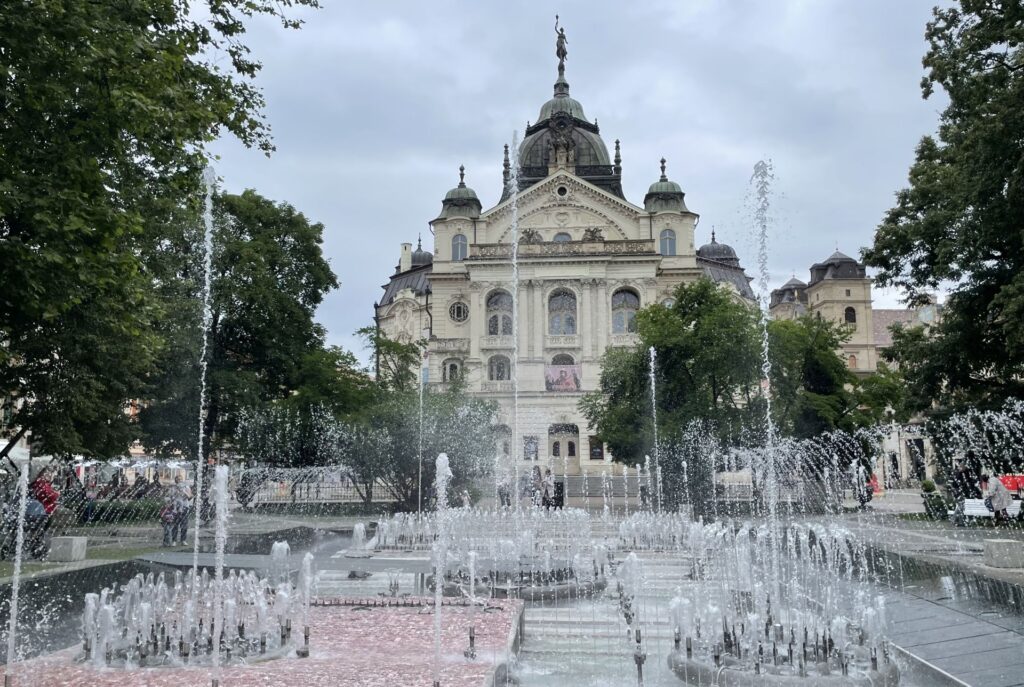
Right between the Cathedral and State Theatre is a little park with benches and a singing fountain and carillon that chimes every hour.
One of the most iconic photos you might have seen of Košice is a statue of an old man in the middle of a street, with the St. Elisabeth Cathderal in the background. That is the statue of Július Jakoby, a talented Hungarian painter and a prominent figure in Hungarian and Slovak art, who called Košice his home.
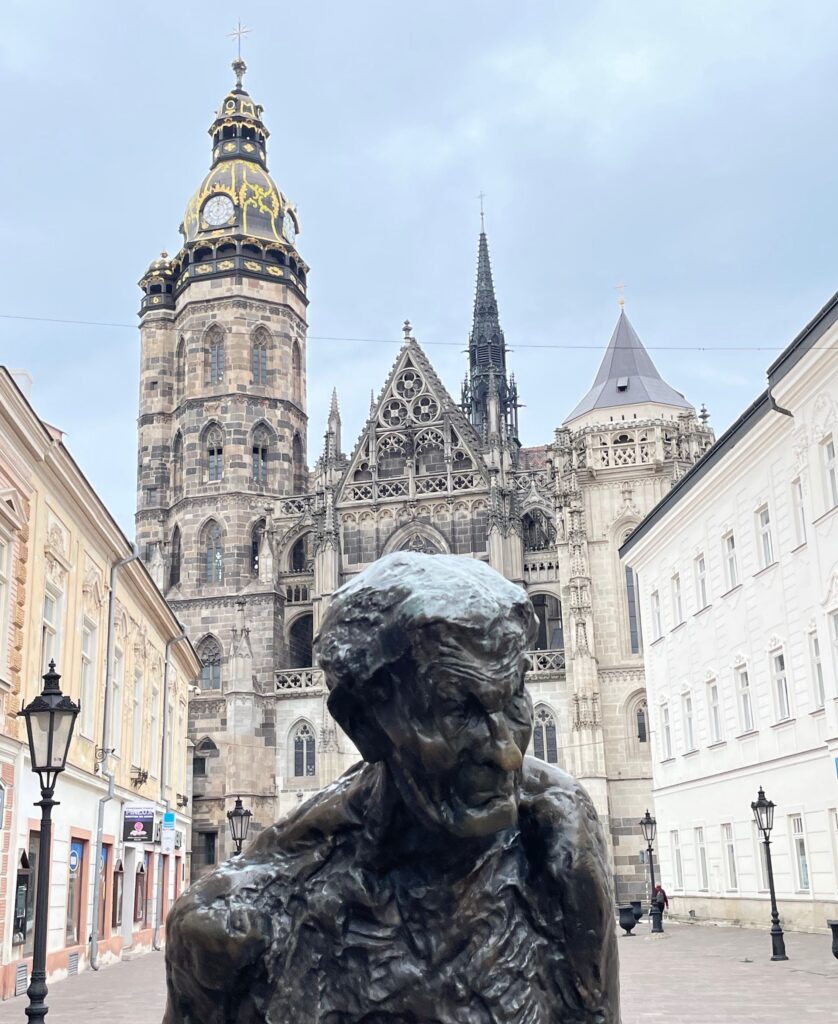
There are many other beautiful places in Slovakia: you can visit the UNESCO-listed wooden churches and some of the numerous castles, but the mountainous region of Visoke Tatre is also worth a visit. Just take your time – you will get the opportunity to explore a picturesque country with an authentic culture that has not been discovered by mass tourism yet.
